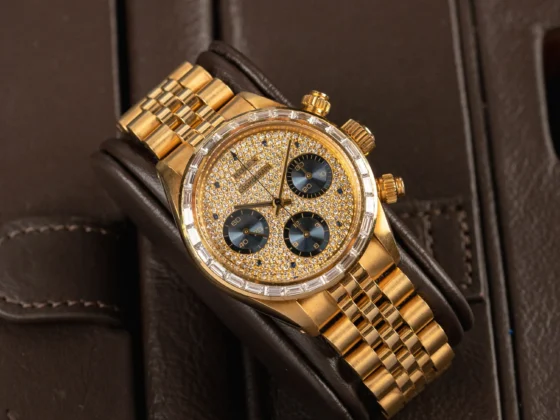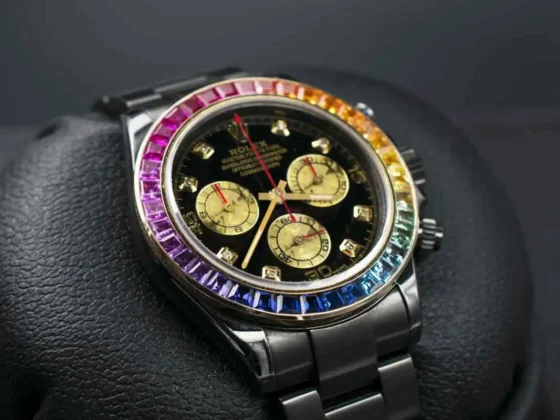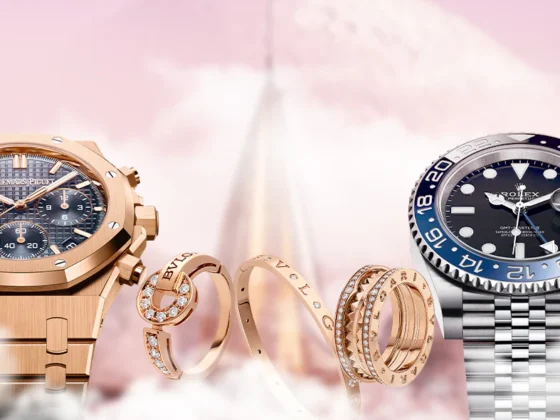The global luxury jewelry market is deeply intertwined with the ebb and flow of international currency fluctuations. With top brands such as Cartier, Chopard, and Restivo Diamonds relying on both local and global demand, changes in currency values can significantly impact pricing strategies, production costs, and consumer behavior. In this article, we explore how currency fluctuations shape the luxury jewelry industry, with a focus on how these dynamics influence purchasing behavior, brand positioning, and long-term market trends.
Currency Exchange Rates and Pricing
One of the most immediate effects of currency fluctuations on luxury jewelry brands is how they influence pricing. Brands operating in multiple international markets must constantly adjust their pricing models to account for changes in currency exchange rates. When the home currency of a brand strengthens, their products become more expensive for foreign buyers, potentially dampening demand. Conversely, when the home currency weakens, it creates more attractive pricing for international consumers, often spurring increased sales.
For instance, during periods when the U.S. dollar is strong against the Euro, luxury jewelry from European brands like Chopard and Cartier becomes more expensive for American consumers. In contrast, a weaker Euro may encourage U.S. buyers to purchase more European luxury goods as they perceive a discount in price, despite local retail values remaining the same.
Restivo Diamonds, known for its bespoke craftsmanship and exclusive collections, must also adapt to these fluctuations. As a global luxury jewelry brand, Restivo carefully monitors currency trends to offer competitive pricing without compromising the exceptional quality that defines its creations. By doing so, they maintain appeal across markets and ensure that their pieces remain accessible to discerning clients, no matter where they are based.
Consumer Purchasing Behavior
Currency fluctuations not only affect brand pricing strategies but also have a direct influence on consumer purchasing behavior. When currencies shift, consumers in specific markets may feel incentivized to make larger, high-value purchases, while others may hold off, waiting for a more favorable exchange rate.
For instance, a weakening Japanese yen could prompt affluent consumers in Japan to reduce their luxury jewelry spending, while European or American shoppers might see it as an opportune moment to invest in high-end pieces from Japanese designers. Similarly, a strong dollar can drive more U.S. consumers to shop locally or at home, affecting the flow of luxury goods in international markets.
Luxury consumers are highly attuned to these price changes, and many use favorable exchange rates to make significant purchases. By anticipating these behaviors, brands like Restivo Diamonds can adjust marketing strategies to cater to consumers in markets where currency strength increases purchasing power.
Regional Strategies for Luxury Brands
As a result of currency volatility, many luxury jewelry brands have developed regional strategies that allow them to minimize financial risk while maximizing market potential. For brands with a global presence, this might involve adjusting pricing differently in various regions, hedging currency risks, or even modifying supply chains to leverage the most cost-effective production options in countries where currency shifts offer an advantage.
Luxury giants like Cartier and Chopard often shift resources and marketing focus to regions where currency conditions favor higher sales. They may also look to increase investment in markets where weaker local currencies encourage greater spending by foreign tourists. This is especially relevant in major luxury hubs such as London, Paris, and Milan, where tourism-driven luxury sales can significantly fluctuate based on the strength of various currencies.
Restivo Diamonds, with its focus on craftsmanship and bespoke designs, often tailors its approach to different markets, ensuring that customers worldwide experience a consistent level of exclusivity and service. While pricing might vary based on currency exchange rates, the brand’s commitment to offering one-of-a-kind, artisanal pieces remains steadfast across regions.
Hedging Against Currency Risk
To mitigate the risks associated with currency fluctuations, many luxury jewelry brands implement sophisticated financial strategies. One such strategy is hedging, where brands use financial instruments to lock in exchange rates and reduce the impact of currency volatility on their profits. By doing so, they can stabilize pricing for both local and international consumers and avoid sudden price hikes that might otherwise discourage purchases.
Hedging also allows brands like Cartier, Chopard, and Restivo Diamonds to manage production costs more effectively. When raw materials such as gold, platinum, or gemstones are sourced from multiple countries, shifts in currency values can dramatically affect overall costs. Through careful hedging strategies, these brands maintain their pricing integrity and protect their margins without passing unpredictable costs onto consumers.
Currency Fluctuations and the Investment Appeal of Jewelry
For high-net-worth individuals and collectors, currency fluctuations can also impact the investment appeal of luxury jewelry. Precious metals and gemstones often appreciate in value over time, making luxury jewelry not only a stylish choice but also a potential financial asset. When currency values shift, the relative price of investment-grade pieces can vary, offering opportunities for savvy investors to make profitable purchases.
For example, when the Euro weakens against the U.S. dollar, American investors might find that European luxury jewelry offers a favorable investment compared to domestic options. Similarly, collectors in Europe could seize the opportunity to purchase luxury pieces from Restivo Diamonds and other brands at a time when currency conditions allow for potential future appreciation.
Global Luxury Jewelry Sales and Currency Stability
Luxury jewelry brands often thrive in markets where currency stability is consistent. In countries with volatile currencies, it can be difficult for both consumers and brands to predict the right time to buy or sell. Brands like Restivo Diamonds, Cartier, and Chopard must navigate these uncertainties by maintaining flexible pricing structures and leveraging digital platforms to reach global customers more easily, bypassing the constraints of regional instability.
Online luxury marketplaces such as MaisonDesigners offer a solution by presenting a global platform where consumers can buy pre-owned luxury jewelry in stable currencies. Platforms like this allow buyers to find exclusive, high-end pieces without being as affected by regional currency fluctuations, further strengthening the appeal of luxury jewelry as a global commodity.
Conclusion
Currency fluctuations have a profound impact on the luxury jewelry market, shaping everything from pricing strategies to consumer behavior. Brands like Cartier, Chopard, and Restivo Diamonds must continually adapt to these shifts to remain competitive and appealing to an international audience. By leveraging tools like hedging, regional strategies, and digital marketplaces like MaisonDesigners, these brands can maintain their prestige and profitability, even in the face of global economic uncertainty.
As the luxury jewelry market continues to evolve, the ability to navigate currency fluctuations will remain critical to the success of top brands. For consumers, understanding these dynamics can help make more informed decisions about when and where to purchase their next investment in luxury.





